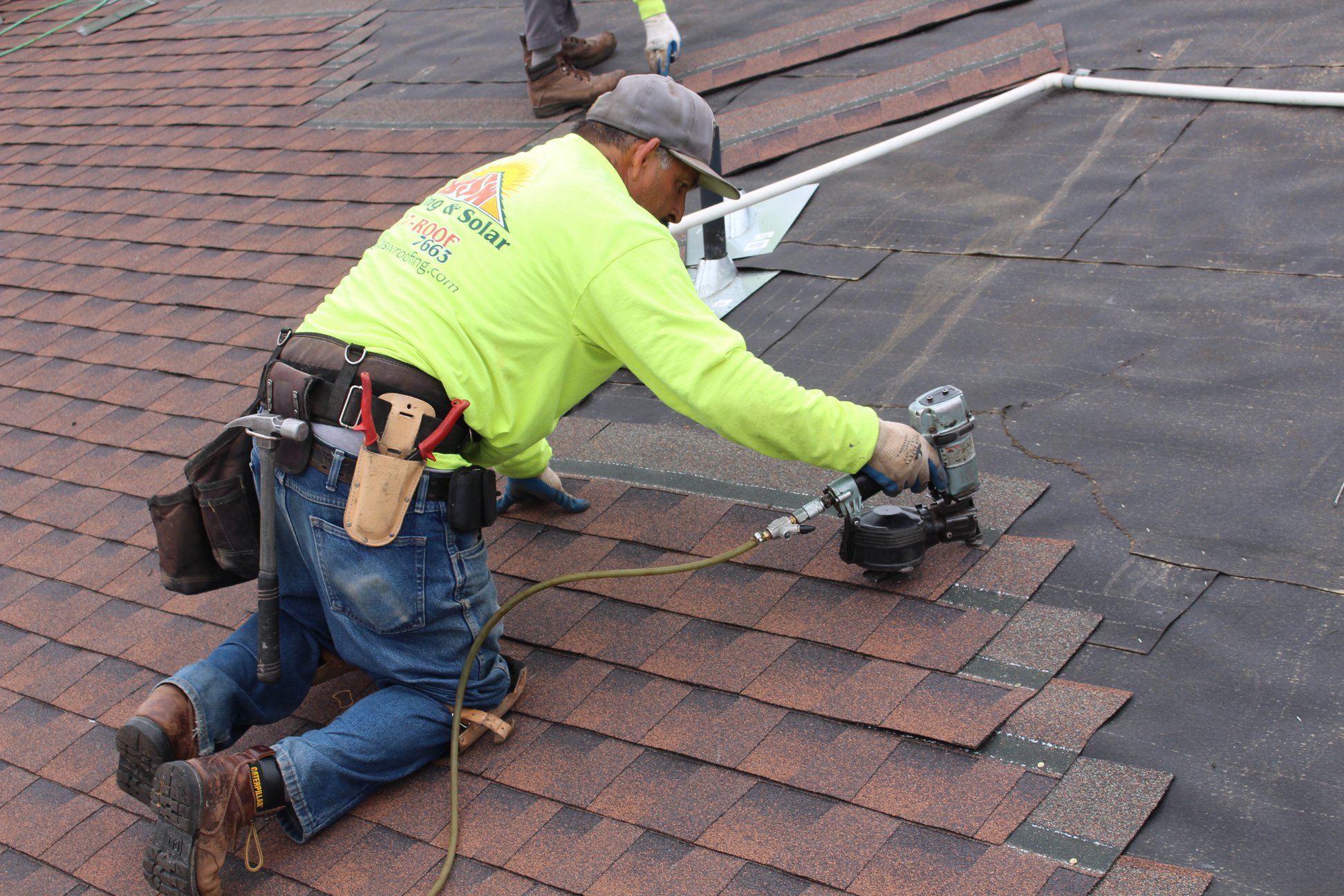Step-by-Step Guide to Locating the Right Roofing Companies in Gainesville
Step-by-Step Guide to Locating the Right Roofing Companies in Gainesville
Blog Article
Finest Practices for Ensuring Appropriate Roof Ventilation
A balanced consumption and exhaust air vent ratio, commonly 1:300, plays an essential duty, with consumption vents ideally positioned at the lower side of the roof for cool air access and exhaust vents at the peak for warm air leave. Keeping insulation away from vents is vital to avoid airflow limitation.
Understand Air Flow Fundamentals
Appropriately understanding air flow basics is vital for making certain the durability and effectiveness of roof. Effective ventilation reduces wetness build-up and temperature level extremes in the attic room, both of which can lead to considerable architectural damages gradually. A well-ventilated roof helps in avoiding usual concerns such as mold and mildew development, wood rot, and ice dams, which can compromise the integrity of the roof covering products and the underlying frameworks.
The main objective of air flow is to promote the activity of air, enabling a regular exchange in between the outside and indoor environments. This balance is achieved via a mix of consumption and exhaust vents that interact to preserve optimal airflow. Consumption vents, generally located along the eaves or soffits, enable fresh air to enter the attic room room, while exhaust vents, usually positioned at or near the roofing ridge, make it possible for warm, damp air to escape.
Secret elements influencing the performance of roof covering ventilation include appropriate placement, appropriate sizing, and ensuring that both intake and exhaust vents are unhampered. Normal assessment and upkeep are important to determine potential clogs, damages, or inefficiencies in the ventilation system, consequently safeguarding the roof covering's efficiency and sturdiness.
Sorts Of Roof Vents
Roofing vents play a vital role in keeping efficient attic room ventilation and, by expansion, the total health of the roof covering system. Different types of roofing system vents are readily available, each with distinct benefits tailored to specific roof covering requirements.

Soffit vents are set up under the eaves and work in tandem with roofing system vents to make sure a well balanced intake and exhaust system. By permitting cooler air to get in from below, soffit vents facilitate the expulsion of warm air via top vents. Gable vents, situated on the exterior wall surfaces of the attic, deal another reliable service, specifically in homes with gable roofing systems.
Examine Your Present Ventilation

Following, take into consideration the age and problem of your roof products and ventilation components. Older systems might not abide with existing building go right here ordinance or may have deteriorated gradually, lowering their effectiveness. Conduct a complete exam to recognize any indications of damage, such as rust, damage, or gaps that can jeopardize the system's performance.
Furthermore, measure the attic room temperature level and humidity degrees. High temperatures and moisture can suggest poor air flow - roofing companies. Utilize a hygrometer and thermostat to obtain exact readings, contrasting them with exterior problems. Persistent inconsistencies recommend prospective concerns that require addressing.
Installation Best Practices
Efficient installment of roof ventilation systems is paramount for making sure ideal efficiency and long life. Appropriate installation begins with comprehending the specific air flow requirements of the structure and the roof covering it covers. This includes computing the right proportion of consumption to tire vents, generally sticking to the 1:300 guideline, which stipulates one square foot of air flow for every 300 square feet of attic floor space.

The placement of vents is similarly important. Consumption vents should be look here mounted at the roofing's reduced side, typically in the soffits, to allow great air to go into. Exhaust vents, on the various other hand, should be set up near or at the roofing system's top to promote the departure of cozy, wet air. This develops a natural air flow that helps keep temperature and dampness equilibrium within the attic room space.
Seal all air vent connections thoroughly to stop air leakages and potential water infiltration. Use high-quality materials and comply with maker guidelines to guarantee longevity and effectiveness. Furthermore, integrating ridge vents with baffles can substantially boost air flow performance by protecting against wind-driven rain and snow from entering the attic.
Inevitably, precise setup of roof covering air flow systems mitigates prospective problems such as mold development, ice dams, and structural damage, making certain the roofing's honesty and the building's general wellness.
Normal Upkeep Tips
Consistency in upkeep methods is essential to making certain the lasting efficiency of roof air flow systems. During these examinations, make sure that vents are free of particles, nests, and other blockages that could hinder air movement.
Use a soft brush or a vacuum to remove dust and particles from consumption and exhaust vents. Be cautious not to harm the air vent displays or louvers during the procedure.
Correct insulation is equally important. Make sure that attic insulation does not block the vents, as this can significantly restrict air flow. Reposition or change it to maintain a reliable barrier. if any insulation has actually shifted or worked out.
Finally, replace any type of harmed or missing out on components without delay. Broken Look At This vents, broken roof shingles, or shabby blinking can all add to insufficient ventilation and ought to be dealt with right away. Regular maintenance guarantees that the roof ventilation system operates ideally, therefore expanding the lifespan of the roofing system itself.
Final Thought
Making sure appropriate roof air flow is critical for maintaining the performance and durability of a roof. Adherence to the 1:300 intake and exhaust air vent proportion, paired with the calculated placement of vents, is important. Routine semiannual evaluations, particles cleansing, and making certain insulation does not obstruct air flow are crucial techniques. Carrying out these ideal techniques will cultivate a well-ventilated roof, thus reducing potential problems related to moisture build-up and extreme warmth, inevitably lengthening the roofing's lifespan.
A balanced consumption and exhaust air vent proportion, generally 1:300, plays a crucial role, with consumption vents ideally placed at the lower side of the roof for trendy air entrance and exhaust vents at the height for warm air exit. Intake vents, commonly located along the soffits or eaves, enable fresh air to get in the attic space, while exhaust vents, typically located at or near the roofing ridge, make it possible for warm, moist air to run away.
Soffit vents are installed under the eaves and work in tandem with roofing vents to ensure a well balanced consumption and exhaust system. By permitting cooler air to get in from below, soffit vents promote the expulsion of warm air through top vents. Adherence to the 1:300 consumption and exhaust vent ratio, coupled with the tactical placement of vents, is crucial.
Report this page